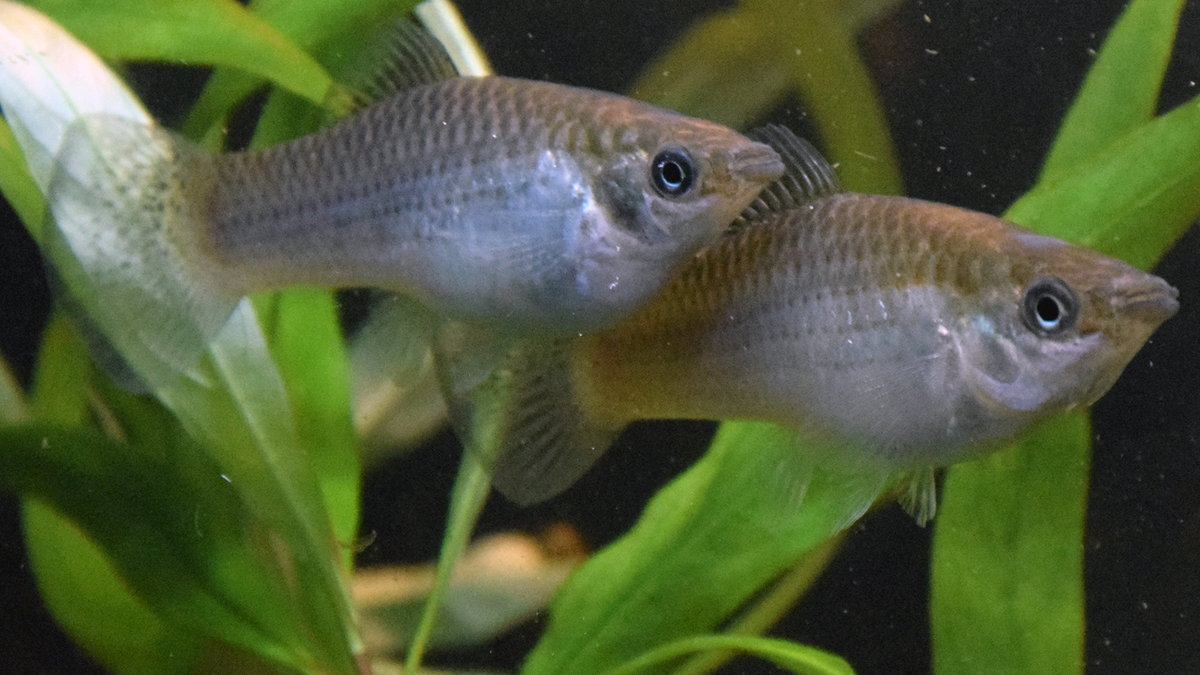Survival of all-female fish species points to its DNA

Ever since the Amazon molly was the first asexual vertebrate discovered in 1932, scientists have wondered how this came to be. Now, new clues are being uncovered with the completion of its genome.
The very rare animals that reproduce asexually — only about one in a thousand of all vertebrate species — are thought to be at an extreme fitness and ecological disadvantage compared with their sexual counterparts, who always reshuffle their DNA to make each offspring genetically unique.
But that theory doesn’t hold true for the Amazon molly, an all-female fish species that scientists have now traced back its evolutionary history to show that is has thrived for millennia in the fresh waters along the Mexico-Texas border (and, more recently, in aquariums everywhere).
To better understand how this fish’s reproduction deviates from the norm, an international team of scientists has sequenced the first Amazon molly genome.
“This study caps an intensive collaborative study, marking the first glimpse of the genomic features of an asexual vertebrate, and setting up a platform for future molecular, cellular and developmental work in this interesting species,” said Michael Lynch, who directs the Biodesign Institute's Center for Mechanisms of Evolution at Arizona State University.
Their findings suggest that the molly’s asexual reproduction is unusual not because the animals are at a disadvantage but because the fish has a hardy genetic makeup that is extremely rare in nature and that keeps the animals healthy.
“It appears the stars aligned for this species,” said first author Wesley C. Warren, assistant director of comparative genomics at McDonnell Genome Institute at Washington University School of Medicine in St. Louis. “The fish’s original genome had to be perfectly aligned and all of the elements compatible to allow an asexual reproducer to survive in good health for so long. That kind of combination is rare — kind of like Fred Astaire and Ginger Rogers — that sort of combo doesn’t come around very often.”
The findings are published Feb. 12 in the journal Nature Ecology & Evolution.
A fish tale
Ever since the Amazon molly was the first asexual vertebrate discovered in 1932, scientists have wondered how this came to be.
One of the theories that spell out why asexual reproduction should stand in the way of a species’ fitness and success is the idea that if no new DNA is introduced during reproduction, then harmful gene mutations can accumulate over successive generations, leading to eventual extinction. Another hypothesis states that because asexual reproduction limits genetic diversity within a species, the animals eventually become unable to adapt to changes in the environment.
“The expectation is that these asexual organisms are at a genetic disadvantage,” said Warren, also an assistant professor of genetics. “In reality, the Amazon molly is doing quite well.”
The researchers found that the Amazon mollies resulted from a sexual-reproduction event involving two different species of fish, when an Atlantic molly (P. mexicana) first mated with a Sailfin molly 100,000 to 200,000 years ago.
Since then, the Amazon molly has been a hybrid that has remarkably remained frozen in evolutionary — yet still thriving.
“That’s about 500,000 generations if you calculate it out to the present day,” Warren said. “The expectation is that many harmful mutations would accumulate in that time, but that’s not what we found.”
The Amazon molly reproduces by “mating” with a male fish of a related species. But the male’s DNA is not incorporated into the offspring. Instead, mating with the male fish triggers the replication of the entire maternal genome. In essence, mollies clone themselves. They don’t lay eggs but instead give birth to large broods of live offspring.
Send in the clones
Scientists have long theorized that clones, by failing to purge harmful mutations, should lead to genomic decay, and eventual extinction over generations.
The scientists found no widespread signs of genomic decay.
This was the case even when they examined genes involved in organs the molly would not have needed for eons, such as making sperm or male development. Remarkably, these genes remain intact and the molly genetically diverse.
So while the Amazon molly has thrived over eons, it remains resistant to giving away its genomic secrets — for now.
Though it’s still unclear why the Amazon molly’s genome remains so healthy and free of harmful mutations after so many generations of asexual reproduction, the researchers believe the answer will soon be found in the animal’s genome.
“It may be that the Amazon molly has the best of both worlds,” said research colleague Manfred Schartl at the University of Wurzburg in Germany. “It seems to have some advantages that we see in species that reproduce sexually and other advantages normally seen in species that produce offspring non-sexually."
Whatever the reasons, the researchers said the Amazon molly is an exception to ideas about the evolutionary disadvantages of asexual reproduction.
“The success of this species appears to be a random event,” Warren said. “That’s very rare in nature because the combination has to be perfect for species like the molly to thrive over so many generations.”
Written by Joe Caspermeyer, Arizona State University, and Jim Dryden, Washington University in St. Louis
More Science and technology

ASU and Deca Technologies selected to lead $100M SHIELD USA project to strengthen U.S. semiconductor packaging capabilities
The National Institute of Standards and Technology — part of the U.S. Department of Commerce — announced today that it plans to…

From food crops to cancer clinics: Lessons in extermination resistance
Just as crop-devouring insects evolve to resist pesticides, cancer cells can increase their lethality by developing resistance to…

ASU professor wins NIH Director’s New Innovator Award for research linking gene function to brain structure
Life experiences alter us in many ways, including how we act and our mental and physical health. What we go through can even…